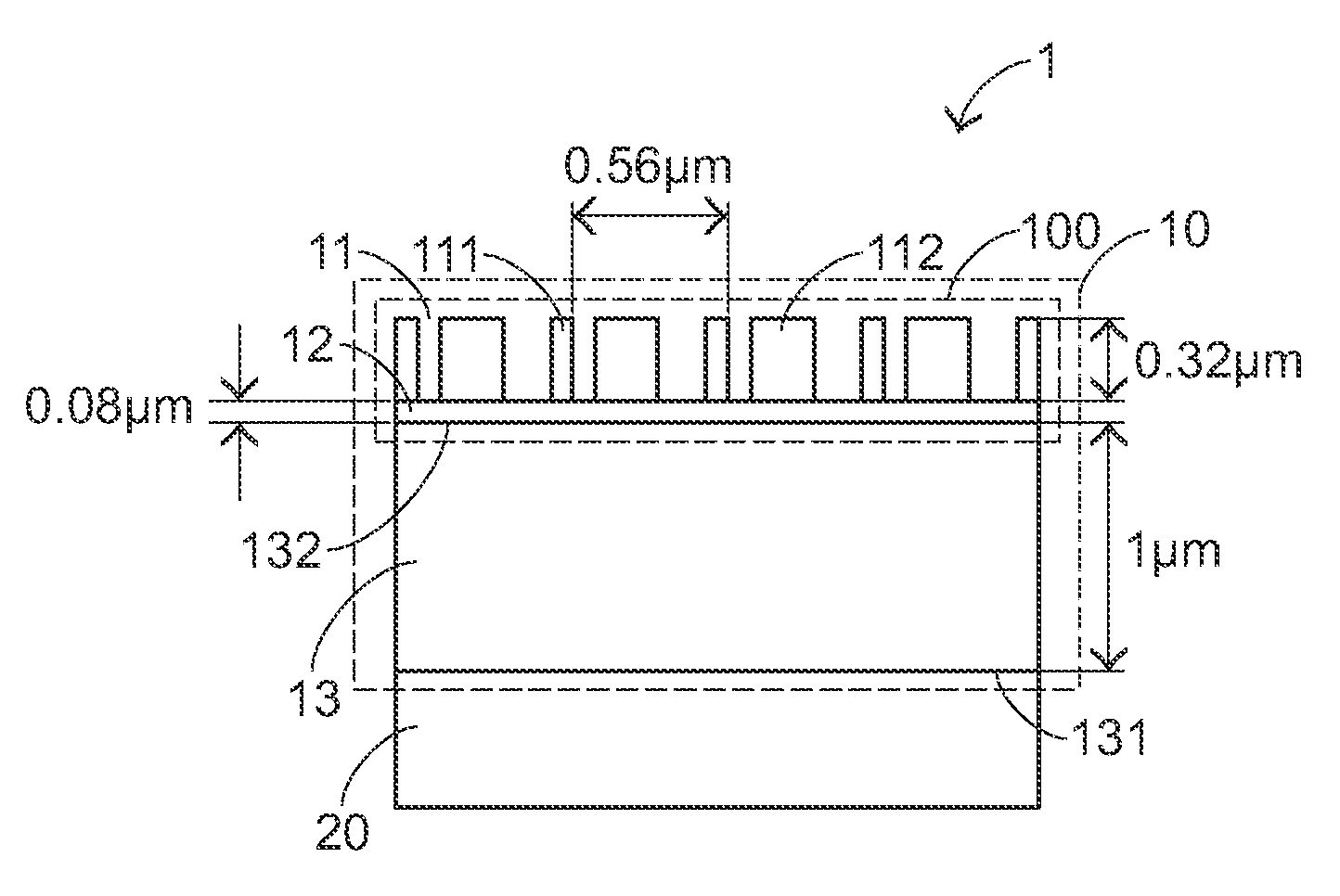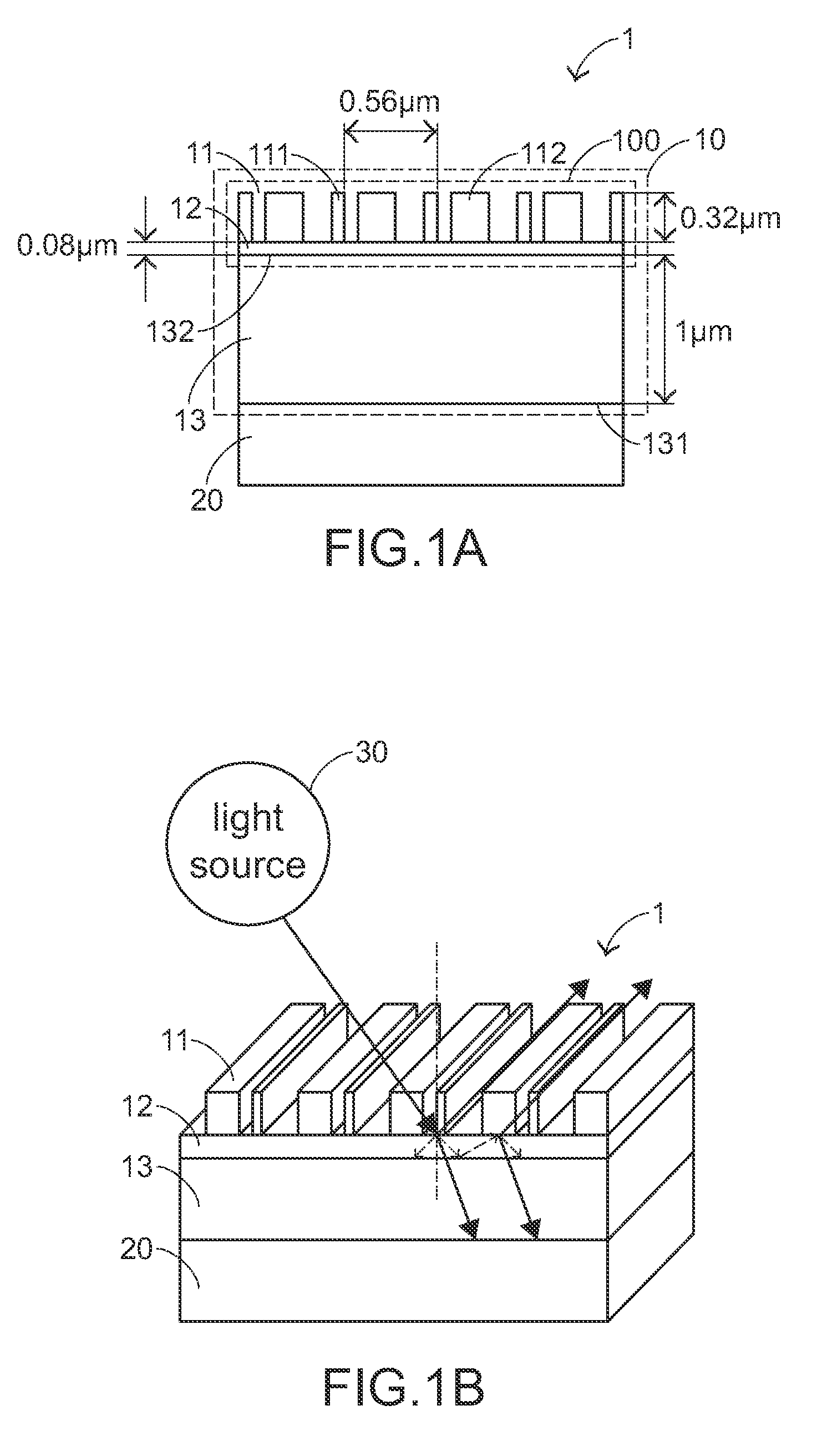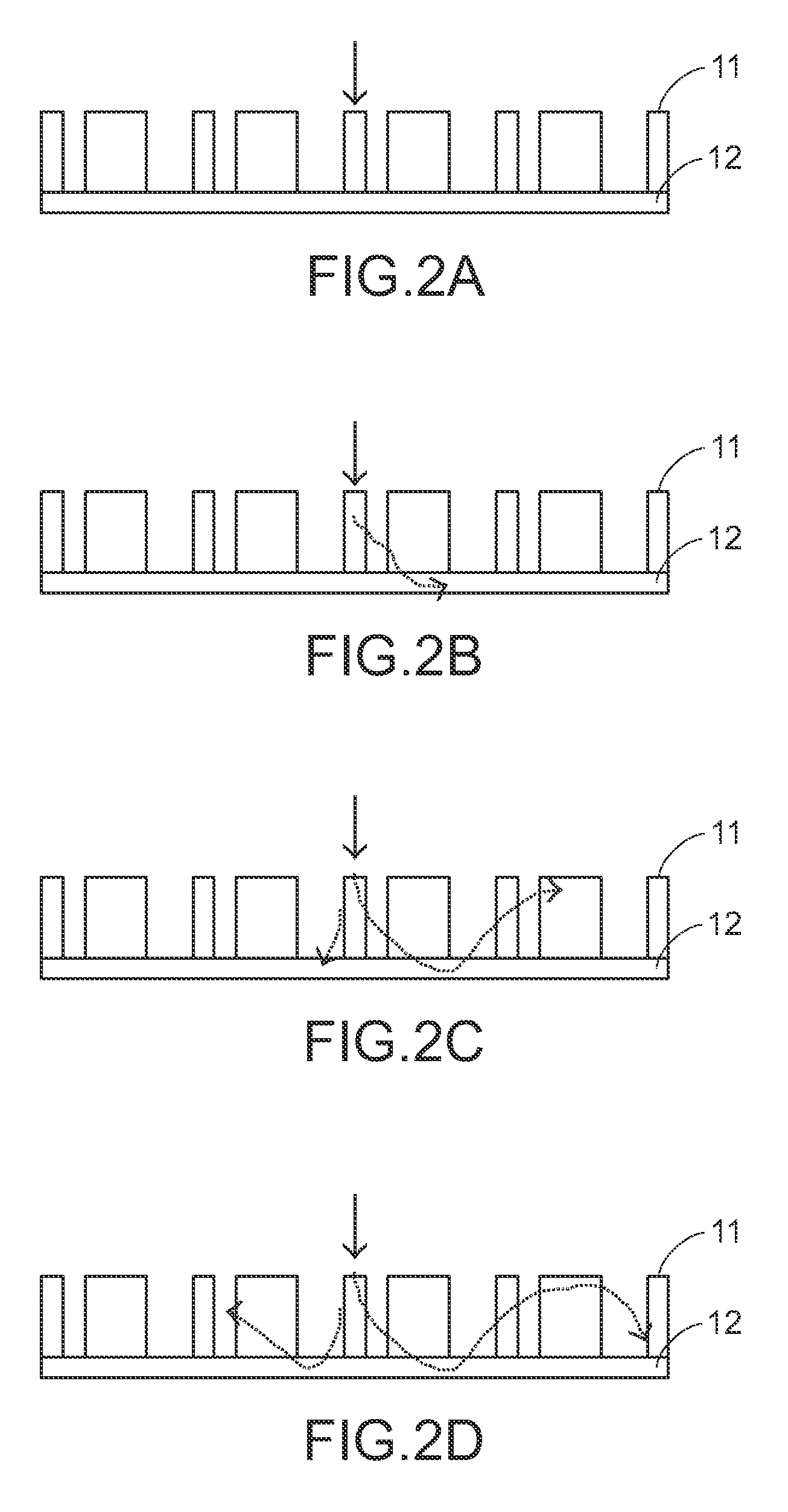Guided mode resonance solar cell
a solar cell and guided mode technology, applied in the field of guided mode resonance solar cells, can solve the problems of insufficient absorption of the gap energy between the valence band, the cost of silicon becoming relatively expensive, and the increase in silicon quantity, etc., to achieve the effect of facilitating the capture of ligh
- Summary
- Abstract
- Description
- Claims
- Application Information
AI Technical Summary
Benefits of technology
Problems solved by technology
Method used
Image
Examples
Embodiment Construction
[0015]The present invention will now be described more specifically with reference to the following embodiments. It is to be noted that the following descriptions of preferred embodiments of this invention are presented herein for purpose of illustration and description only. It is not intended to be exhaustive or to be limited to the precise form disclosed.
[0016]The present invention provides a guided mode resonance solar cell. The guided mode resonance solar cell combines a guided mode resonance (GMR) unit with a known TF-Si solar cell body. The guided mode resonance solar cell of the present invention has an elongated optical path length and increased light dwelling time, so that the energy conversion efficiency and the light-trapping effect are both enhanced. The term “guided mode resonance (GMR)” is a phenomenon indicating that the light passing through gratings irregularly diffracts into a waveguide layer. That is, the light passing through gratings tends to couple into the wa...
PUM
 Login to View More
Login to View More Abstract
Description
Claims
Application Information
 Login to View More
Login to View More - R&D
- Intellectual Property
- Life Sciences
- Materials
- Tech Scout
- Unparalleled Data Quality
- Higher Quality Content
- 60% Fewer Hallucinations
Browse by: Latest US Patents, China's latest patents, Technical Efficacy Thesaurus, Application Domain, Technology Topic, Popular Technical Reports.
© 2025 PatSnap. All rights reserved.Legal|Privacy policy|Modern Slavery Act Transparency Statement|Sitemap|About US| Contact US: help@patsnap.com



